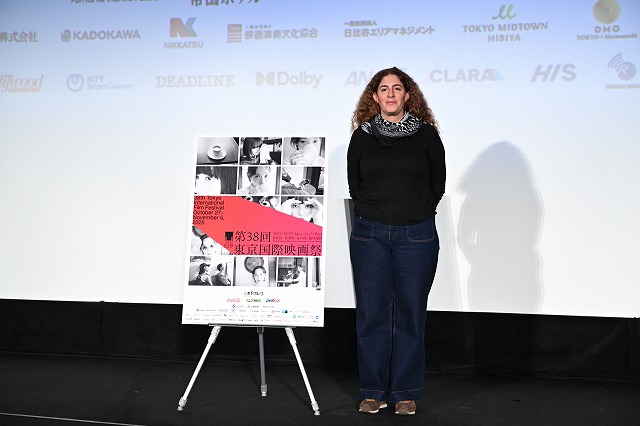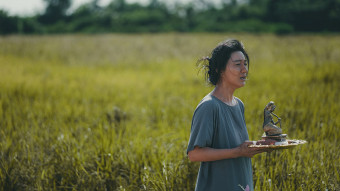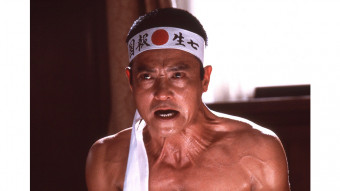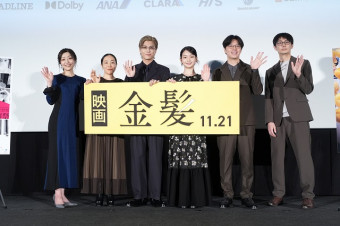
It is unlikely that any other film at the 38th Tokyo International Film Festival is as keyed into current events as Palestine 36, which received its Asian premiere on October 30 in the main Competition section. As per the title, this historical drama takes place in Palestine in 1936, when the region was still under British rule. The Balfour Declaration of 1917, which expressed the British government’s support for establishing a homeland in the Middle East for the Jewish people, and the resulting partition of Palestine led to a nationalistic uprising whose repercussions are still being felt.
Annemarie Jacir’s film depicts the various factors involved, but it should not be perceived as a detailed overview of all the forces that fed into the tragedy. As a Palestinian work, it exclusively depicts the purview of the Arab population of Palestine during the 1930s, and in that regard, the conflict is not explicitly with the Jewish people, who do not appear at all in the film although they were already escaping to the area from persecution in Europe. It is the British, whose determination to retain colonial control over the region is brought into focus in the film. The narrative moves from labor strife over Palestinian workers losing wages and privileges to Jewish migrants, to the rise of various local Arab movements to retain land and commerce, and then on to the development of a rebel element that felt they had no choice but to violently oppose the British mandate.
Jacir, a veteran whose three features have all been selected as Palestine’s official Oscar® submissions, focuses on individuals to tell her story, either farmers living in one particular village or intellectuals and professionals working in Jerusalem. “That way we see how the larger colonial aspects affect each character, on a personal level. There are, of course, internecine conflicts, mainly between Palestinian peasants and Palestinian landowners, who believe the British have their best interests at heart, but in the end, as anger and resentment boil over due to the clearly racist attitude of the Europeans, it all becomes a full-scale conflagration that consumes the Palestinian side. There really is no other choice but to fight back.”
At the start of the post-screening Q&A, TIFF Programming Director Ichiyama Shozo mentioned that he first saw the film at the Sundance Film Festival and then noted that much had happened in the region depicted since then.
Jacir said that she first started researching and writing the story eight years ago. “I also had to drum up financing,” she said. “We don’t have funding for cinema in Palestine, and as you saw in the ending credits, we needed a lot of partners to make it happen.” Indeed, the production is quite major, and the cast includes a number of international stars, including Jeremy Irons and Hiam Abbass.
“Because it was a large film, we had to start pre-production quite early, about 10 months before we planned to start shooting,” she continued. “We restored an entire village and planted crops, like cotton and tobacco, that were cultivated by Palestinians at the time; and made period-correct costumes and props. We even built the kind of tanks the British army used at the time. It was a huge undertaking.”
However, circumstances eventually intruded in a big way. “The first day of shooting was slated for Oct. 14, 2023, and we were all set, but on October 7, the disaster happened. We lost all our locations and had to transfer the entire shoot to Jordan. We ended up stopping and starting the production four times. It became very complicated.”
Perhaps because of its scale, several people in the audience referenced Lawrence of Arabia in their questions to Jacir. One man confessed to knowing very little about the Arab cause except what he had learned from David Lean’s classic and thanked Jacir for “filling in the blank spaces.” Strictly speaking, Palestine 36 addresses a very different dispute than the one covered in Lawrence, but both films shared a villain in British colonialism.
“The British came to Palestine 108 years ago,” explained Jacir. “And we’ve never really had a perspective on that from the Palestinian side. Filmmakers everywhere try to tell their own stories, their own histories. We weren’t trying to cover everybody’s viewpoint.”
Extending the Lawrence theme, another audience member asked about the music, since he felt that a march played during a ceremony to inaugurate a local Palestine Broadcasting Service sounded a lot like the ending theme to Lawrence. “Perhaps,” said Jacir, “but it wasn’t intentional. During such a ceremony there would have been a traditional British military band, and we tried to recreate as faithfully as possible the atmosphere of the time by referencing archival materials. That’s how the people looked and dressed, right down to the fox stole one woman wore. The point is that the British wanted to create the illusion of community, but you can see how this all eventually broke down and the various peoples of the land were separated from each other.”
Someone was curious about the large and varied cast of characters. “I usually don’t write like that,” said Jacir. “But I came up with five separate groups of characters in order to give a wider picture of the revolt. But in the end, it is the land itself is the main character.”
Returning to the film’s musical component, Jacir said she was careful to include traditional Arabic songs sung by women, who figure centrally in the story. She was also keen about the odd image that appeared during the closing credits, of a Palestinian man playing the bagpipes.
“We tend to think of bagpipes as only played by British and Scottish people,” she said. “But they were brought from Europe to the Middle East during the Crusades, so now they’re ours, too.”
Q&A Session: Competition
Palestine 36
Guest: Annemarie Jacir (Director/Screenplay)



























































